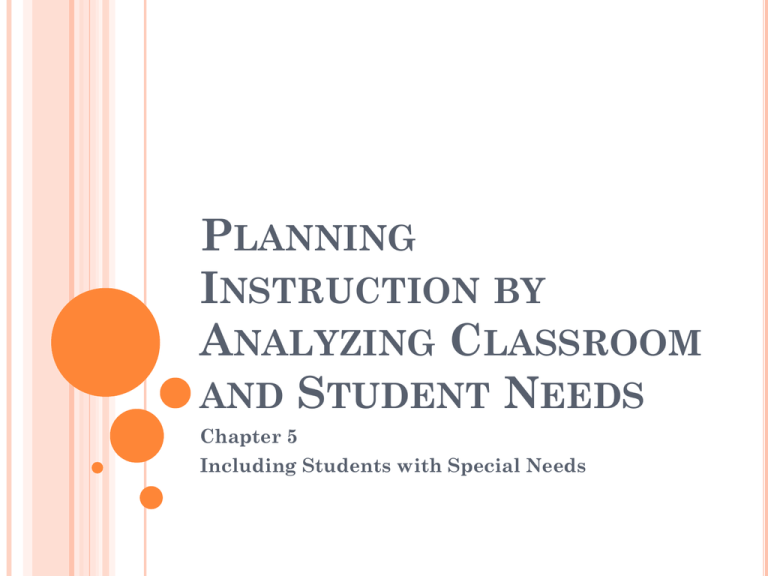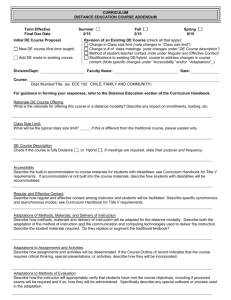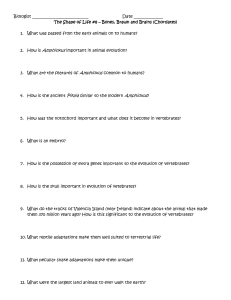RtI: Changing the Way Teachers Teach and Schools Think
advertisement

PLANNING INSTRUCTION BY ANALYZING CLASSROOM AND STUDENT NEEDS Chapter 5 Including Students with Special Needs THE INCLUDE STRATEGY Student performance is the result of an interaction between the student and the instructional environment Carefully examining and analyzing students’ learning needs and the specific demands of the classroom environment, teachers can reasonably accommodate most students with special needs in the classroom. THE INCLUDE STRATEGY Identify classroom demands Note student learning strengths and needs Check for potential areas of student success Look for potential problem areas Use information to brainstorm adaptations Decide which adaptations to use Evaluate strategy effectiveness STEP 1: IDENTIFY CLASSROOM DEMANDS Classroom organization Physical organization Classroom routines Classroom climate Classroom rules and monitoring Use of time Classroom grouping Whole Small One-to-one STEP 1: IDENTIFY CLASSROOM Instructional materials Textbooks Manipulatives and models Computers Assistive technology Instructional methods Direct instruction Indirect instruction (inquiry learning) Scaffolding Independent student practice (homework) Evaluation of student performance STEP 2: NOTE STUDENT LEARNING STRENGTHS AND NEEDS Academics Social-emotional development Physical development STEP 3: CHECK FOR POTENTIAL AREAS OF STUDENT SUCCESS Analyze student strengths Success enhances self-image and motivation STEP 4: LOOK FOR POTENTIAL PROBLEM AREAS Review learning needs within a particular instructional context and potential mismatches are identified STEP 5: USE INFORMATION TO BRAINSTORM ADAPTATIONS Accommodations (stays the same) Services or supports provided to help students gain full access to class content and instruction. Modifications (changes) Made when the content expectations are altered and the performance outcomes expected of students change. STEP 6: DECIDE WHICH ADAPTATIONS TO IMPLEMENT Select age appropriate adaptations Select the easiest adaptations first Select adaptations you agree with Select adaptations with demonstrated effectiveness STEP 7: EVALUATE STUDENT PROGRESS Evaluate strategy effectiveness Track through: Grades Observations Analysis of student work Portfolios Performance assessments Teacher, parent, student ratings





